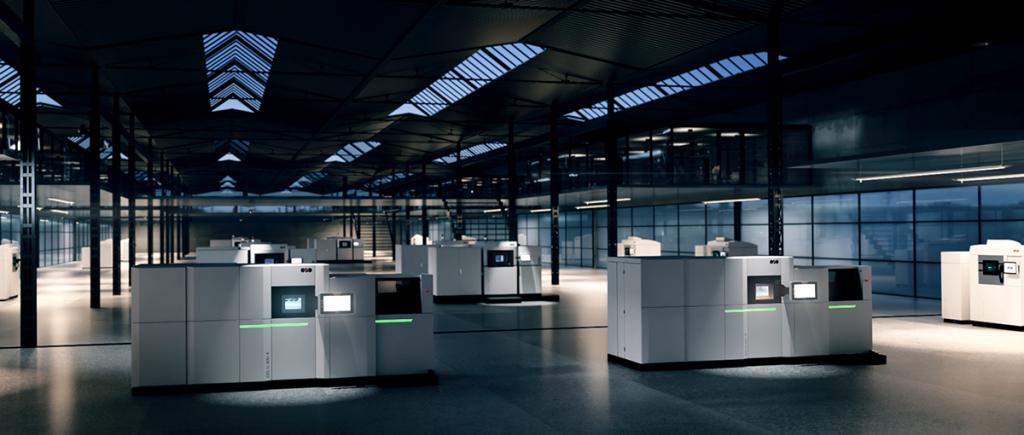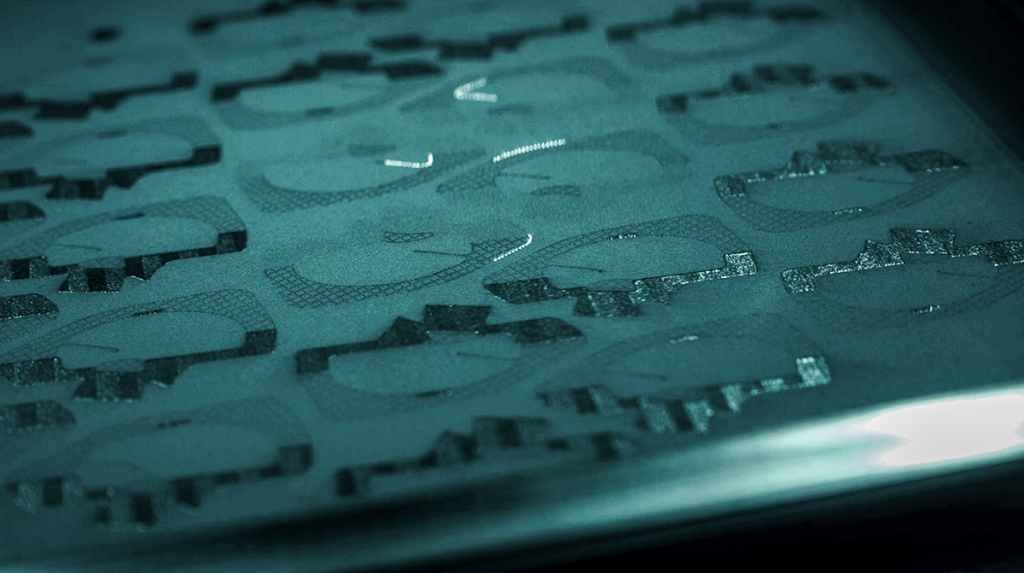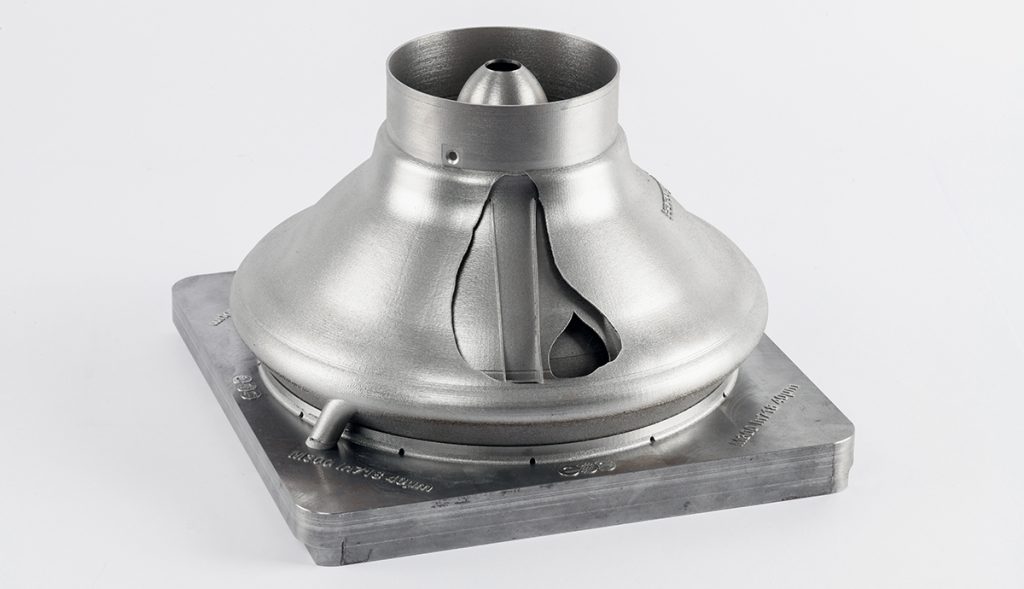Taking the holistic view: Defining the state-of-the-art in the evolving PBF-LB machine marketplace
In a rapidly evolving Additive Manufacturing landscape, choosing a machine for the production of parts by Laser Beam Powder Bed Fusion (PBF-LB) is now about far more than a cost per part calculation. In this article, Sebastian Becker, EOS GmbH, considers how a host of additional factors now need to be considered when exploring the AM machine marketplace, from the specifics of a machine's operation to software, IP protection and beyond. [First published in Metal AM Vol. 7 No. 2, Summer 2021 | 10 minute read | View on Issuu | Download PDF]

The world of industrial Additive Manufacturing has evolved at an incredible pace over the last ten years and seems to just keep accelerating. The days where AM was seen as only suitable for prototyping, or simple low-volume production with plastics, are a long way behind us. Metal-based AM components are being used in some of the most demanding use cases, and enabling parts to be completely reimagined. Today’s parts made with AM perform way beyond the limitations of more traditional manufacturing techniques, making them lighter, stronger, with fewer components and more efficient assembly.
There was a time when a state-of-the-art AM system was defined purely by its production speed, reliability and part quality. These things still matter of course, but the world of manufacturing has moved on: Industry 4.0, distributed production, digital warehousing and improved sustainability are just some of the issues that are defining how the industry has started to evolve. Ultimately, choosing AM machinery is no longer simply about its ability to meet the mechanical properties that a production facility needs for its parts.
The old rules are more important than ever
The ability to produce high-quality parts efficiently, dependably, and consistently is vital for all manufacturing organisations. As AM continues to evolve, new features have accelerated productivity, reliability, and repeatability to new heights. That ‘holy trinity’ is being pushed forward by technological advances that exist inside and outside the build chamber and are helping organisations position themselves as innovators in their field.

Not too long ago, the industry focused on cost-per-part (CPP) as a top priority for metal AM purchase decisions. Still more important than ever, but in recent years, the discussion has become more detailed around production properties. Productivity is achieved through faster build speeds, maximising machine uptime, high utilisation rates, and by reducing the time spent on non-productive tasks such as setup and recoating. Several features that are now regarded as essential for state-of-the-art systems influence how a machine performs in these areas.
Laser versatility
More lasers doesn’t necessarily equate to greater productivity. In fact, the more lasers in a system, the more complexity is added to system management and calibration. It’s better to focus on the versatility of the lasers, ensuring they cover the full build area, and can be assigned in various ways for production needs. Is every laser working the whole time, to achieve the highest efficiency, for example?
Predictive maintenance
An essential part of ensuring productivity levels is understanding how a machine is performing, and when, therefore, it will need maintenance. Systems that can predict the maintenance required, and when it will be needed, will help with production planning and reduce unplanned downtime.
Handling and filtration systems
The latest generation of AM machines can remain operational while handling and filtration components are being serviced. Even more impressive industrial AM machines with lifetime filters exist, which eliminates this type of service interruption altogether, improving uptime. The same is also true for loading machines with powder material which can take place while machines are running or separately preparing a powder supply container that can quickly and easily be interchanged.

Speed of setup and recoating
Ultimately, productivity is about reducing non-productive time as much as possible – and every second matters when you’re talking about a complex production platform. Speed is a critical feature of any metal AM machine, and not just when it comes to build times. Consider how quickly the machine can be set up for each job, and the speed of the recoater system. New systems recoat much faster and more accurately than previous generations – meaning higher productivity, better quality, and low wastage.
Break out of the black box
So far, almost everything we have talked about can be regarded as the bare minimum of what could qualify as a state-of-the-art industrial metal AM machine. To become a truly innovative manufacturer in this constantly evolving arena, and be well positioned for whatever the future may bring, we must look beyond the mechanics of the AM process. We can no longer view an AM machine as an isolated ‘black box’ that produces parts. It must be able to act as a part of the full production process, and that means not just being physically incorporated into the production floor but being able to work as part of the whole ecosystem of the production line, and across the supply chain.
Digital inventory is a great example of how an ecosystem approach can revolutionise a supply chain and lead to huge cost savings. Producing parts on demand from a digital inventory, not only removes all the costs out of making and storing components in batches, but means that will always be available, and can be produced on an AM machine anywhere in the world.
“To become a truly innovative manufacturer in this constantly evolving arena, and be well positioned for whatever the future may bring, we must look beyond the mechanics of the AM process. We can no longer view an AM machine as an isolated ‘black box’ that produces parts.”
Software and data matter
Machines rely increasingly on software for their own operation, but must also be able to integrate with a host of other software applications. This software will not only initiate and report on the completion of jobs, but can provide continuous monitoring of jobs to ensure that parameters within the build chamber are within specified tolerances, not only for the machine, but the part. These might include build chamber temperatures, humidity, inert gas data and power consumption.
This data can help optimise the production environment, and over time be used to identify areas of improvement, as well as feeding directly into other production systems, such as an ERP platform. Collecting data from machines is one thing, but an organisation will also need the tools to analyse it, and this is where techniques such as machine learning and AI come in. Make sure that any AM solution chosen can not only produce data that is granular and accurate, but does so in formats that can easily be consumed and analysed by other systems. A fundamental mistake is to think that collecting data alone is going to make a difference. Data can be screaming an opportunity for improvement, but if the manufacturer as the user of AM machines isn’t analysing the data, it falls on deaf ears.
“A fundamental mistake is to think that collecting data alone is going to make a difference. Data can be screaming an opportunity for improvement, but if the manufacturer as the user of AM machines isn’t analysing the data, it falls on deaf ears.”
The digital elephant in the room
Let’s not pretend that all this talk of more connectivity, software and big data doesn’t raise one big concern in the mind of any manufacturer – cybersecurity. It is an area that should be taken very seriously when evaluating any new system, but don’t make the mistake of thinking it is all about protecting your network from being hacked and production taken offline. You must also consider how the system will protect your IP, and that of customers, through a combination of encryption and rights management that locks down build jobs in a way that IP cannot be viewed or stolen by anyone.
Making the move to state-of-the-art
Deciding to upgrade an industrial AM arsenal to a state-of-the-art solution is a big investment, and no easy decision. Whilst the benefits might be clear – it is an investment in the future – a future that is not yet entirely clear to manufacturers or even AM technology providers in terms of the dominant design of AM production facilities. Therefore, organisations should look for systems that are modular and extensible so they can evolve with changing business needs and the industry. Here are some of the key considerations to take into account when evaluating where to invest:
- Have a clear vision for where some of the features we have talked about here can make a big difference in a business today, and in the future. Buying a new industrial AM machine, to just maintain the workflows in place today, is not an investment in the future.
- Productivity, reliability and repeatability still count more than anything. Don’t lose sight of this when choosing a vendor.
- Don’t get duped into ‘shiny’ features that won’t be used. Be pragmatic about the evolution your business is going through and what features will ultimately get used over the lifetime of the solution.
- Pick a technology partner that can help with achieving the efficiency gains of implementing their system in your workflow, not their testbed. This should include simulations, CPP analysis, as well as multiple production parts for review.
- Choose a partner that can support the lifetime of the printing platform, far beyond installation and initial training. Ask, can they remotely support the machines? What is their roadmap for software updates and feature additions?
Driving innovation with your business should be a central expectation placed on any prospective partner. Make sure their experience can be used to support the wider innovations you plan in your manufacturing operations, such as digital warehousing and click-to-print.

Looking ahead
The future is exciting: state-of-the-art solutions with the capabilities we have discussed exist today, and are making a huge difference in a host of production settings, and creating some of the hardest working final products in brutal environments. They are saving money, lowering CPP, and allowing manufacturers to take on a host of production jobs that would have just been too complex in the past.
Whilst the future of digital manufacturing may still be unfolding, today’s state-of-the-art machines bring a new level of performance in terms of reliability, productivity, and repeatability. Such systems allow manufacturers to set out their own future and seize new opportunities.







